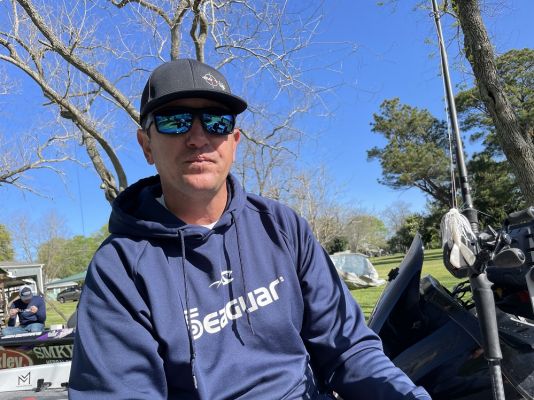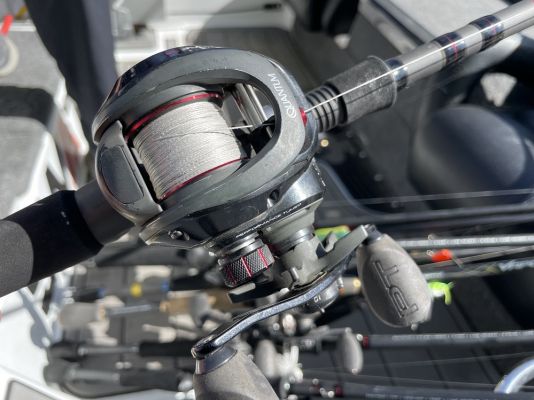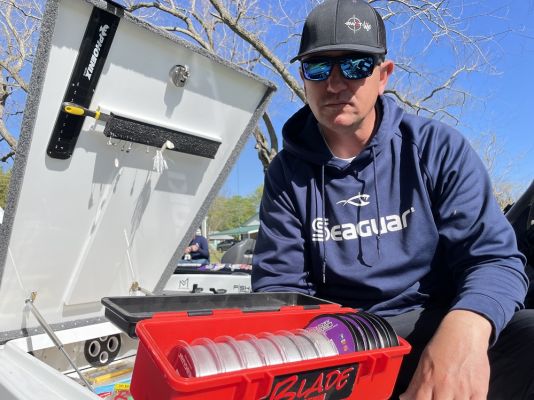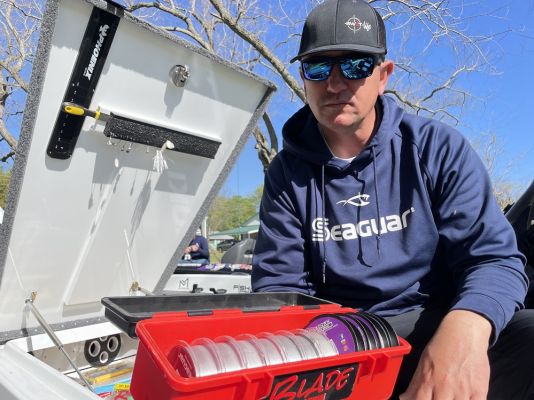The swim jig is a popular lure choice that works well around various types of cover. These lures have many fans because they catch plenty of fish and are great at fooling big bass. Among those with an affinity for them is Louisiana pro Gerald Spohrer. He keeps one tied on during all phases of the spawn and beyond as long as he's fishing shallow water.
The Major League Fishing pro fishes them differently than many anglers, going to the max to get them into hard-to-reach spots.
"I'm what you would call 'an extreme swim-jigger,' and I like to fish them in very heavy cover," he said. "I'm trying to put it into places other anglers overlook or can't get to. My goal is to almost lose that bait by getting it so far back into the cover that the fish are surprised by the bait and eat it out of reaction."
When to Fish the Swim Jig
The swim jig is one of those rare lures that can catch a fish just about any time of the year, but Spohrer has learned some ideal times for them.
"I generally start fishing them as soon as the tournament season starts, as long as the water temperature is right," he said. "The best situation is when the water temperature is holding steady around 54-degrees, anything less than that and the fish are not as aggressive. You want it to be that temperature for a few days to where the fish start to think about spawning and it will work all the way through the shad and bluegill spawns."
Primarily, Spohrer is looking for brush and other wood cover when deciding to fish a swim jig in dense areas.
"Anywhere with buckbrush is good, but you can also swim it around laydowns, bushes, docks, and gator grass," he said. "I like to get it into those tight spots because they're not used to seeing baits and one or two little hops is enough to get them to eat it. But, it's such a versatile bait that you can fish it just about anywhere."
Spohrer's Swim Jig System
Besides excellent casting accuracy, Spohrer says his system for getting a bait into hard-to-reach spots and then getting the fish back out is heavily dependent on the right system for his gear.
"I use a 7' heavy rod, fast reel, and 50-pound Seaguar Smackdown braid," he said. "Everything has to be strong for this to work and my swim jig is a big, heavy-duty hook with a Gamakatsu Siwash hook. It's a prototype jig from Nomad Designs and you can't open up that eye even on a big hookset with a braid, a stout rod, and a big fish on the other end. I add a compact grub as a trailer so it skips better and doesn't foul up or lose any appendages like a craw trailer will."
Spohrer likes to skip and pitch the bait into the tightest openings because he believes most anglers wouldn't dare to try to get a bait there.
"This is one technique where I can confidently fish right behind people because most people just pitch the outside and hit the easy stuff," he adds. "I don't go light with any of my gear because when a big one eats it, you need to be able to turn them and get it out of there. Everything needs to function right and be strong enough to get the bait in and out of these small openings in brush or other heavy cover."
50-pound braided line is his go-to and he prefers a smooth 8-strand braid like Seaguar Smackdown for the strength and castability.
"You have 8-strands, which makes it more durable because you simply have more strands for strength, and I've never broken a fish off with a hookset, which happened before I switched to Seaguar," he said. "If you have a little knick in one strand on 4-strand braid, that 50-pound turns into something more like 20-pound braid. The other thing I like about it is how smooth it is and it doesn't cut into the brush as easily as a 4-strand braid, which tends to saw into the cover more often."
Swim Jigs for the Shad Spawn
While much of Spohrer's "extreme swim-jigging" is done skipping around brush and other cover, he'll also use one heavily around the shad spawn.
"It's a great way to catch bass when they're feeding on spawning shad; it could be around shallow primrose or gator grass or on floating docks," he said. "I like a light ¼-ounce jig for the super shallow stuff to keep it up in the water column and will use a 3/8-ounce a little bit deeper."
Fishing around the shad spawn is less of a heavy-cover approach and he'll swap out his braided line for fluorocarbon.
"Braid is overkill in these situations and while you still have to watch for dock cables and stuff like that, fluorocarbon is the way to go," he shared. "I like 17-pound Seaguar AbrazX for the added abrasion resistance, but have started using their Tatsu more and more. It's still strong and abrasion resistant but has better castability, in my opinion."
The swim jig is a lure that's produced time and time again for Gerald Spohrer and it's from a combination of having the right system for gear and a willingness to fish it in places others overlook. Every spring, it works for him and is something he always has rigged up early in the year.






 Advertising
Advertising